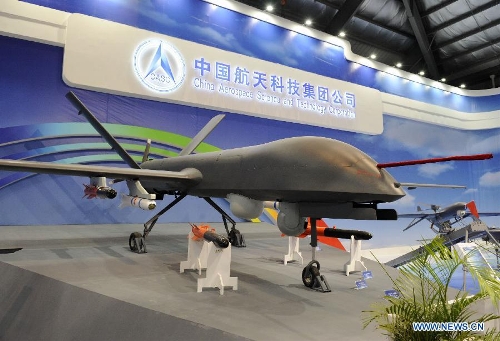I thought the Cloud Shadow was exclusively an export-oriented version of the Sky Wing III / Wind Shadow.
Yes, but this does not exclude a variant for the naval aviation too if they would prefer a single engine design?
I thought the Cloud Shadow was exclusively an export-oriented version of the Sky Wing III / Wind Shadow.
What I read on FYJS is that the two are the same aircraft. PLA adopts the twin-turbofan (500kgf thrust each) while the export version on the show is equipped with one turbojet of 1000kgf thrust. What would be the advantage of adopting the single engine version by PLAN? The total thrust is the same meaning no take-off advantage, the turbojet version has higher fuel consumption that shortens range, but the two turbofans may take up more room (less fuel). Don't really know how to choose.Yes, but this does not exclude a variant for the naval aviation too if they would prefer a single engine design?
What I read on FYJS is that the two are the same aircraft. PLA adopts the twin-turbofan (500kgf thrust each) while the export version on the show is equipped with one turbojet of 1000kgf thrust. What would be the advantage of adopting the single engine version by PLAN? The total thrust is the same meaning no take-off advantage, the turbojet version has higher fuel consumption that shortens range, but the two turbofans may take up more room (less fuel). Don't really know how to choose.
Looks exactly like the twin engine Sky Wing III/Wind Shadow, note that it has a twin wheel nose gear, also the antenna over engine(s) intake looks in the right place.
And so we get to one of the benefits of RPAs: attrition tolerant.Turbojets are old tech with worse fuel consumption, but should be pretty price competitive to buy and maintain compared to turbofans.
However the maths gets less straight foward with 1 high thurst turbojet vs 2 lower thurst turbofans.
For naval aviation, typically twin engined designes are preferred as that gives extra redundancy as in many climates, bailing out far from friendly ships is effectively a death sentence for the pilot, with rescue unlikely to reach the pilot before hypothermia claims them.
However, that is less of a concern for unmanned drones.
The PLA would prefer twin engines as getting a drone back on one engine is infinitely preferable to picking up its pieces from an impact crater.
However, would a naval carrier skipper even want to risk trying to recover a damaged drone running on one engine? It is unlikely to have sufficient thrust to make it back into the air for another pass with only one engine if it missed the wires on the first attempt. With lots of personnel and far more expensive aircraft also on deck, is that shot even worth taking when you run the risk of that drone crashing into packed aircraft and deck crew if things goes sideways?

